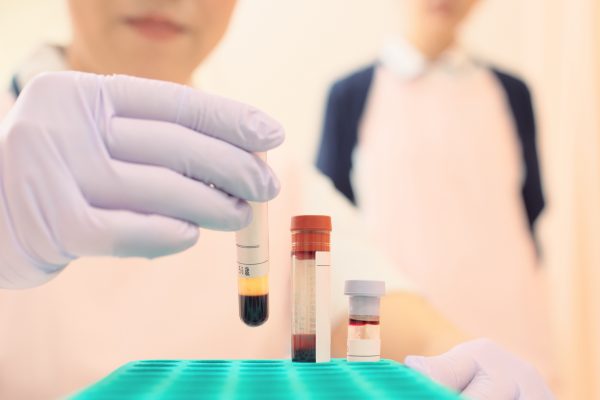
Concizumab is an anti–tissue factor pathway inhibitor monoclonal antibody, with subcutaneous administration, designed to achieve haemostasis in all haemophilia types. Recently published in the New England Journal of Medicine, the results of the explorer7 trial showed that concizumab lowers the rate of spontaneous and traumatic bleeding episodes compared to no prophylaxis in patients with haemophilia A or B.
For patients with haemophilia with inhibitors, intravenous bypassing agents carry a substantial treatment burden. Subcutaneous prophylactic treatment with concizumab, a monoclonal antibody designed to target the tissue factor pathway inhibitor, presents a promising alternative. A new trial aimed to assess both the efficacy and safety of concizumab in patients with haemophilia A or B with inhibitors. The treatment was administered by the study doctor via a pen-injector, and aimed to show that concizumab can prevent bleeds in the body and is safe to use.1
METHODS
The phase 3 explorer7 trial included patients (≥12 years) with haemophilia A or B with inhibitors. These patients were randomly assigned in a 1:2 ratio to receive no prophylaxis for at least 24 weeks (group 1) or concizumab prophylaxis for at least 32 weeks (group 2) or were non-randomly assigned to receive concizumab prophylaxis for at least 24 weeks (groups 3 and 4). After a treatment pause due to non-fatal thromboembolic events in three patients receiving concizumab, concizumab therapy was restarted with a loading dose of 1.0 mg per kilogram of body weight, followed by 0.2 mg per kilogram daily (potentially adjusted on the basis of concizumab plasma concentration as measured at week 4). The primary endpoint analysis compared treated spontaneous and traumatic bleeding episodes in group 1 and group 2. Safety, patient-reported outcomes, pharmacokinetics, and pharmacodynamics were also assessed.
RESULTS
Of the 133 enrolled patients, 19 were randomly assigned to group 1 and 33 to group 2; the remaining 81 were assigned to groups 3 and 4. The estimated mean annualised bleeding rate in group 1 was 11.8 episodes, as compared with 1.7 episodes in group 2. The overall median annualised bleeding rate for patients receiving concizumab (groups 2, 3, and 4) was zero episodes. No thromboembolic events were reported after concizumab therapy was restarted. The plasma concentrations of concizumab remained stable over time.
CONCLUSIONS
Among patients with haemophilia A or B with inhibitors, the annualised bleeding rate was lower with concizumab prophylaxis than with no prophylaxis.2
REFERENCES